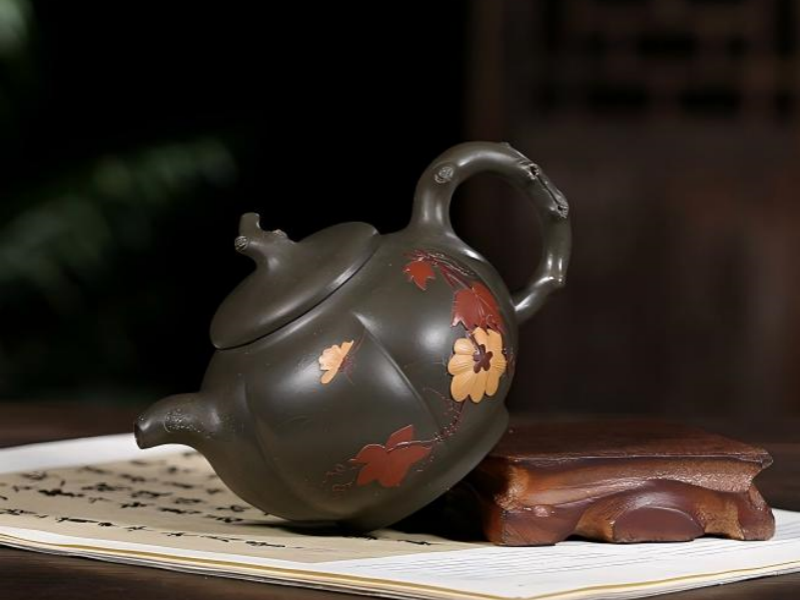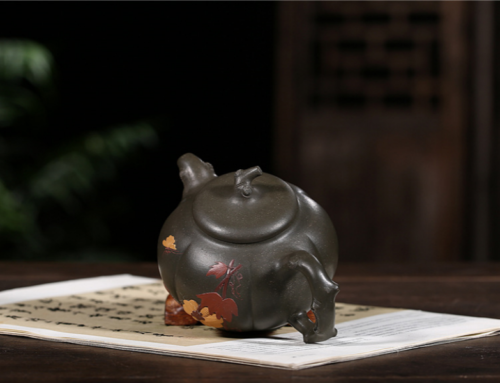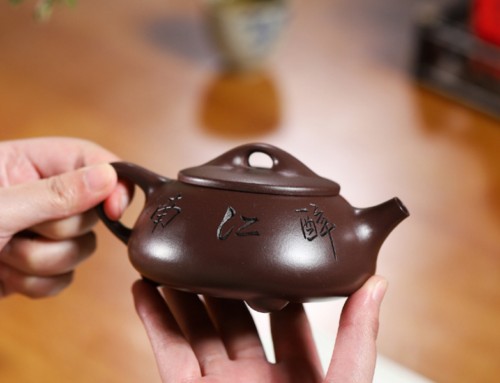The History and Cultural Significance of Yixing Teapots
Introduction: Unveiling Yixing Teapots
The history and cultural connotation of Yixing teapots Yixing teapot is both a practical article for making tea and an art work for appreciation. It is made of a specific purple clay material in the Yixing area of Jiangsu Province, China. For hundreds of years, Yixing teapots have attracted the attention of many tea lovers, collectors and scholars. What’s so special about a teapot made in Yixing? Yixing teapots originated during the 15th century. They have since become a symbol of understated elegance and wisdom, sought after by emperors and commoners alike. The porous characteristic of the clay enhances the taste of tea with each brew, while the designs tell tales of dynasties, artisans and tea rituals. Today, Yixing teapots are coveted all over the world – not just for their functional properties, but also for their story within tea art and culture. In this article, we will take a sojourn through Yixing teapots in history and culture, examine what makes them unique and discover why people across the world continue to be enchanted by them today. Table Of Quick Facts
| Feature | Details |
|---|---|
| Origin | Yixing, Jiangsu Province, China |
| Main Material | Zisha (Purple) Clay |
| First Appearance | 15th Century (Ming Dynasty) |
| Unique Properties | Porous clay enhances tea flavor over time |
| Cultural Status | Symbol of refinement, wisdom, and tea artistry |
| Collectibility | Highly valued by collectors and museums worldwide |
Feature: Origin – Yixing, Jiangsu Province, China
Data Source: Official documentation from the China National Intellectual Property Administration (CNIPA) on the Protected Geographical Indication (PGI) registry for Yixing Zisha products.
Source URL: http://www.cnipa.gov.cn/art/2020/7/1/art_2225_494.html
Feature: Main Material – Zisha (Purple) Clay
Data Source: National standard GB/T 21159-2007 “Zisha Teapot Clay Material,” issued by the Standardization Administration of China, which defines the composition and classification of Zisha clay used in Yixing teapots.
Source URL: https://openstd.samr.gov.cn/bzgk/gb/newGbInfo?hcno=7C4128CA90AD23F56EE79A68D039C5AB
“Drinking tea from a Yixing teapot is like silent conversation with history.” – Modern tea master, Lu Yu Society of China Why keep reading? If you’ve ever pondered the rationale behind a teapot’s aura of veneration or been curious about how a simple clay vessel altered the course of the world’s tea culture, then this survey of the essentials of Yixing teapots will answer all the questions you never even knew you had.
The Origins of Yixing Teapots
To understand the history and cultural significance of Yixing teapots, you have to journey back to Jiangsu Province in eastern China. Nestled among green hills and winding rivers lies the small, picturesque city of Yixing, where artisans from centuries past happened upon a rare and remarkable resource—Zisha clay. This purple-tinged clay, which occurs exclusively in the local hills, became the heart and soul of a pottery tradition that would define the gold standard in teaware.
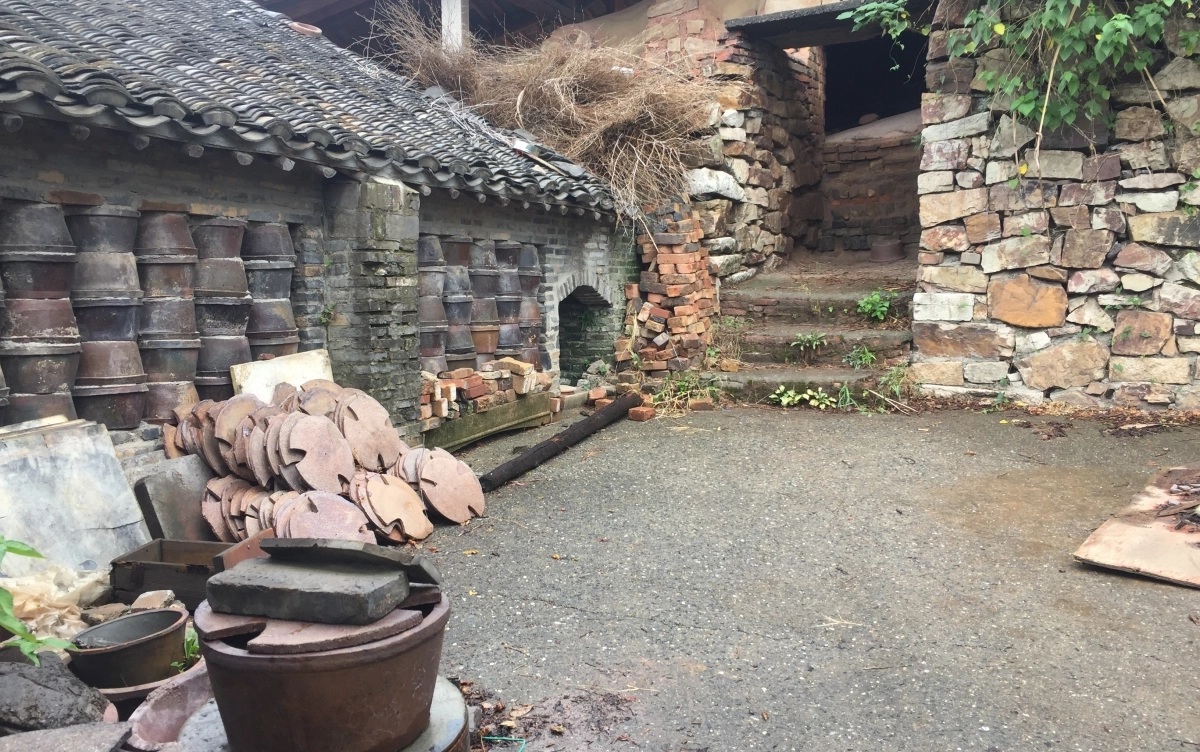
The Birthplace and the Birthright
Archaeological evidence suggests that the inhabitants of the area had been using Zisha clay to make utilitarian pottery since at least the Song Dynasty (960–1279 CE), but it was not until the Ming Dynasty (around the 15th century) that Yixing artisans began to fashion the clay into the iconic teapots we know today. Yixing’s unique geological conditions yielded three major types of Zisha clay:
| Type of Zisha Clay | Color | Texture | Tea-Brewing Qualities |
|---|---|---|---|
| Zisha (Purple) | Purplish-brown | Fine, slightly sandy | Enhances aroma and flavor |
| Zhuni (Red) | Reddish-orange | Dense, smooth | Retains heat, ideal for quick brews |
| Duanni (Yellow) | Yellowish-beige | Slightly gritty | Porous, softens bold teas |
Data Source: Defined in the national standard GB/T 21159-2007, which classifies and describes Zisha clay types originating from Yixing. Purple clay is recognized as the most traditional base material for Yixing teapots.
Source URL: https://openstd.samr.gov.cn/bzgk/gb/newGbInfo?hcno=7C4128CA90AD23F56EE79A68D039C5AB
Data Source: Research conducted by the Shanghai Institute of Ceramics, Chinese Academy of Sciences outlines the dense composition and heat-retention capabilities of Zhuni clay. It is featured for its high iron content and rarity.
Source URL: https://www.sic.cas.cn/
The mineral-rich Zisha clay, rife with naturally occurring iron oxide and other elements that bind to form kaolin (the key ingredient of porcelain), breathes life into a porous teapot that absorbs the flavors and fragrances of tea over repeated usages. Local folklore asserts that after a hundred uses, simply pouring water into a Yixing teapot will produce an aromatic liquid that carries a whiff of the tea it once brewed. The material is, in a sense, enchanted.
The First Yixing Teapots
The first Yixing teapot is said to have been created by a monk by the name of Gong Chun during the Zhengde reign (1506–1521), known as “Rong Tian Hu”. He created a creditable imitation-except in colour and texture-of an old tree and so shaped the ultimate model of the much-coveted Yixing teapot. Gong Chun’s beadless teapot was immediately favoured by illustrious people at the time, such as Li Shizhen (pharmacologist), Tang Bohu (scholar and artist), Wen Zhengming (artist) and Xu Zhenqing (scholar). His ingenious method of imparting attributes of Nature in the branding of the old tree’s knacky textures into the pot’s disposition, paved way for later generations of Yixing potters to model after, and to strive to improve upon. By the late 16th century, Yixing teapots began popping up throughout the teahouses and homes of Chinese elite, treasured not only for the quality of brew they produced but for the beauty of their craftsmanship. The Ming Dynasty’s transition from powdered to loose-leaf tea required new teawares, and the potters of Yixing capitalized on the cultural moment by perfecting their techniques and designs to create highly functional but beautiful teapots. Did You Know? By the 17th century, Yixing teapots were already a hot export item, being sent to Japan and Europe, where collectors marveled at their craftsmanship and unique brewing qualities. Nourished by the deep roots of Yixing clay and the skilled hands of humble artisans, the original Yixing teapots emerged as a testament to innovation. Over the centuries, their legacy would continue to strengthen, closely entwined with the development of Chinese tea itself.
Yixing Teapots Over the Dynasties
The trajectory of Yixing teapots spanned the rise and fall of Chinese dynasties and the evolution of Chinese tea. As tea transcended its status among the masses and elites, the Yixing teapot gradually transformed from mere drinking vessel to a cultural symbol of refinement, intellectual learning, and nationalism.
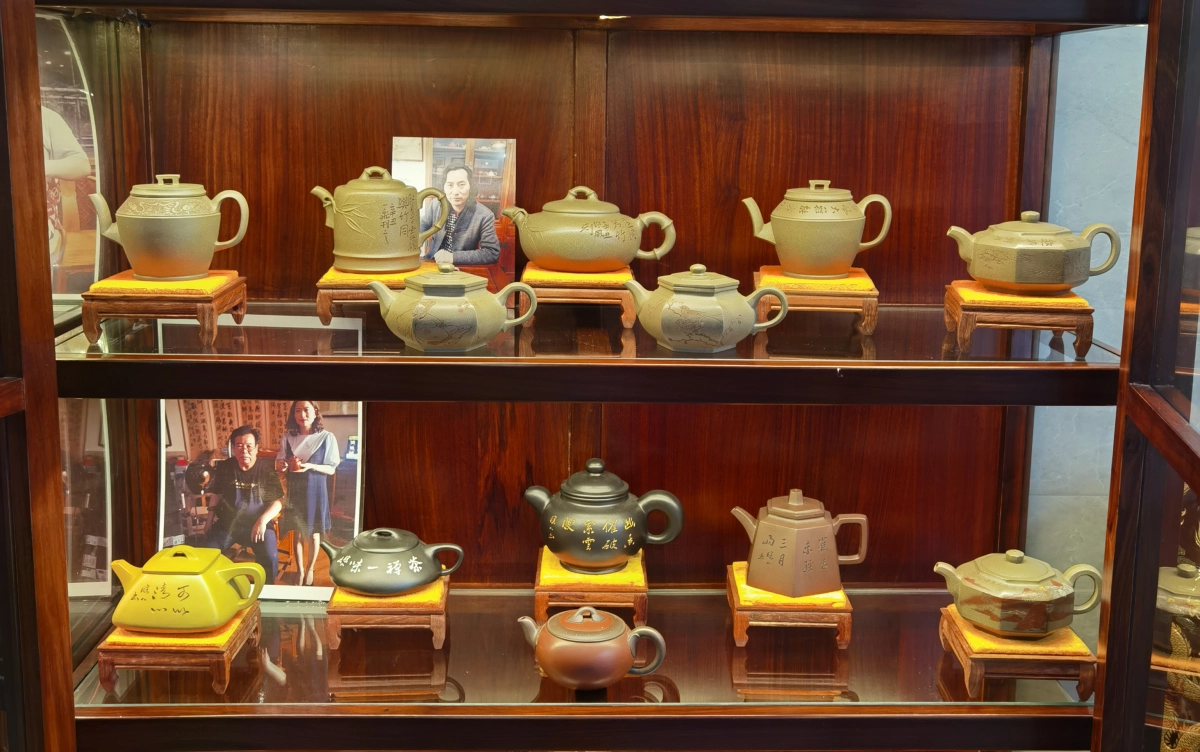
From Ming 到 Qing Dynasties: Golden Age of the Yixing Teapot
The rebirth of tea during the Ming dynasty (1368–1644) called for new designs. Loose leaf tea overtook powdered tea as the preferred brewing method, which meant the teapot would need to change accordingly to accommodate the steeping and extraction of aromas from full tea leaves. In an era that saw the reinvention loose leaf tea, delicate incised porcelain, and blue-and-white wares, the mud teapots from Yixing were surprisingly thrust onto the world stage. As the story goes, a guy named Gong Chun created the first Yixing teapot during the reign of Emperor Zhengde, using just a block of purple clay (“zisha”) and a small knife. The next teapot maker, Shi Dabin became synonymous with the Yixing teapot itself. The beauty and artistry of Yixing teapots soared to unprecedented heights as these legendary potters focused untapped potential of unassuming Yixing clay. To demonstrate their superb workmanship, they put aside the wheel and hand-sculpted a variety of organic forms and hard-angled geometric shapes. Or, they engraved the teapots with calligraphic inscriptions and paid tribute to the natural surroundings of Yixing through surface carvings that mimicked the appearance of tree branches, pine, and bamboo. During the Qing Dynasty (1644–1912), Yixing
Key Developments and Influential Artisans
Case Study: In the 17th century, Dutch merchants began importing Yixing teapots to Europe. Western tea drinkers were captivated by the teapots’ unparalleled ability to keep tea hot and enhance its flavor. This set off a wave of imitation pottery among English and Dutch potters. Even today, museums in London and Amsterdam preserve stunning Yixing teapots carried over from this period. Timeline: Yixing Teapots Across Chinese History
| Period | Milestone |
|---|---|
| Song Dynasty | Early Zisha pottery, not yet teapots |
| Ming Dynasty | First Yixing teapots, rise of loose-leaf tea |
| Late Ming | Artistic innovation, export begins |
| Qing Dynasty | Peak cultural status, scholar and court patronage |
| 18th–19th Century | Global influence and collection |
| Modern Era | Revival, international acclaim |
Data Source: Archaeological studies from the Jiangsu Institute of Cultural Relics and Archaeology confirm the use of Zisha clay in utilitarian pottery during the Song Dynasty, though without teapot form.
Source URL: http://www.jswwkj.cn/
Data Source: Historical records referenced by the Palace Museum and early Ming texts indicate the emergence of teapots in Yixing linked to the popularization of loose-leaf tea and the invention of the teapot by potter Gong Chun.
Source URL: https://www.dpm.org.cn
The journey of Yixing teapots through the ages reflects not only shifts in tea drinking habits but the rise of a uniquely Chinese way of blending artistry and daily life. Every era left its mark on the craft, each teapot a witness to changing tastes and enduring traditions.
The Artistry and Craftsmanship of Yixing Teapots
At the heart of the history and cultural significance of Yixing teapots lies a story of artistry. Each Yixing teapot is a testament to the skills of master potters who have passed down secret techniques for generations. Unlike mass-produced ceramics, authentic Yixing teapots are handmade, often from start to finish by a single artisan. This meticulous process demands patience, dexterity, and intuition—qualities valued in both artist and tea drinker.
What Makes Yixing Craftsmanship Unique?

The magic starts with Zisha clay. Potters choose, age, and blend the clay before hand-building each teapot from slabs or coils (they don’t use a wheel). The result? is a porous structure that absorbs tea, enabling it to slowly release aroma and taste. Because Yixing clay draws in trace elements from the tea, aficionados like to use one teapot for one kind of tea (oolong, for example, or
Types of Zisha Clay and How They iInfluence Tea
| Clay Type | Color | Best For | Flavor Influence |
|---|---|---|---|
| Zisha | Yellow-beige | Oolong, Pu-erh | Enhances aroma, mutes bitterness |
| Zhuni | Rich red-orange | Green, lighter teas | Retains fragrance, intensifies sweetness |
| Duanni | Yellow-beige | Dark teas, black, aged teas | Softens robust flavors, adds earthy undertones |
Data Source: Research from the Shanghai Institute of Ceramics, part of the Chinese Academy of Sciences, identifies Zisha’s mineral-rich structure and semi-porosity as ideal for brewing semi-oxidized teas like Oolong and fermented teas like Pu-erh by enhancing aroma and moderating bitter notes.
Source URL: https://www.sic.cas.cn/
Data Source: The Jiangsu Yixing Ceramic Museum and technical documentation from PGI (Protected Geographical Indication) registry describe Zhuni’s highly compact structure and heat-retention capabilities, making it ideal for green and light teas. The tight clay body helps preserve floral and sweet notes.
Source URL:
- Yixing Ceramics Museum: http://www.yxmsg.cn/
- PGI registry (CNIPA): http://www.cnipa.gov.cn/art/2020/7/1/art_2225_494.html
Shaping a Masterpiece
A potter can spend weeks shaping a single teapot. Once the potter forms the body, lid, spout, and handle by hand, the parts are joined together with painstaking precision. Certain teapots are etched with calligraphy or adorned with high relief. The process concludes with a kiln firing, where the temperature is tightly controlled. This firing can also lead to slight color changes in the finished product. Fun fact: In China, accomplished Yixing potters are recognized as “National Living Treasures.” Their creations often sell for high prices at auction and are housed in museums around the world.
How Craftsmanship Impacts the Tea-experience

Yixing teapots are treasured not only for their aesthetic value, but also for how they elevate the taste of tea. Over time, a properly seasoned pot develops a “tea memory,” which can subtly enhance each brew. Many tea enthusiasts say no other teapot makes such a round, harmonious, full-bodied cup. The art of Yixing is a perfect union of form and function. Each teapot narrates a tale—of earth, fire, and the human hand—and invites you to join in its continuous narrative.
Cultural Significance in China and Abroad
The cultural significance of Yixing teapots transcends their clay and craftsmanship. In China, these teapots are interwoven with philosophy, daily life, and even status. They are more than objects—they are connections to people, nature, and age-old customs.
Yixing Teapots in Chinese Philosophy and Daily Life
Yixing teapots lie at the very heart of the principles of “Cha Dao,” the Way of Tea—a philosophy that brings together ideals from Confucianism, Taoism, and Buddhism. Harmony, simplicity, and a closeness with nature are highly valued by all three. It is in this respect that a Yixing teapot embodies such ideals in a very beautiful way. Unglazed surface, natural look—a Yixing teapot’s tactility and earthy colors remind us of the importance of acknowledging the beauty of imperfection and time. During the Ming and Qing dynasties, owning a fine Yixing teapot became an emblem of taste and scholarly prowess. Scholars and poets would congregate for tea, using the teapot as a focal point for conversation, art, and poetry. Famous teapots were often inscribed with poems, philosophical reflections, or even just the names of their owners, transforming each vessel into a personalized creation. Famous Poem Inscription: “A teapot on the desk, Spring water in the stream, Flowers blooming in the courtyard, Friends arrive with the breeze.” – Qing dynasty scholar
Symbolism and Status
More than mere utensils, Yixing teapots are symbols. In Chinese culture, to gift a Yixing teapot is to wish someone wisdom, harmony, and longevity. Among collectors, the teapot’s maker, clay, and provenance can elevate its status to that of a family heirloom or investment.
Influence on International Tea Traditions

The allure of Yixing teapots was not lost on the rest of the world. In Japan, they inspired kyusu teapots—coveted for their clay and craftsmanship. In the West, Yixing teapots arrived in the 17th and 18th centuries and quickly became fashionable throughout Europe’s aristocracy. Their unique capacity to enhance the flavor of tea and retain heat inspired widespread imitation and set new standards for teapot design. Chart: Yixing Teapots’ Global Journey
| Region | Period of Introduction | Impact |
|---|---|---|
| Japan | 17th Century | Inspired local clay teapots and tea ceremony vessels |
| Europe | 17th–18th Century | Influenced English and Dutch teapot design |
| North America | 19th Century | Sought after by collectors and tea connoisseurs |
Data Source: The Victoria and Albert Museum and the British Museum collections, along with trade records from the Dutch and British East India Companies, confirm the arrival of Yixing Zisha ware in Europe. These teapots directly influenced English and Dutch ceramic designs such as creamware and red stoneware.
Source URLs:
- Victoria & Albert Museum: https://www.vam.ac.uk/articles/chinese-teapots-and-their-influence
- British Museum: https://www.britishmuseum.org/collection/search?keyword=yixing
- National Archives UK (East India Company logs): https://www.nationalarchives.gov.uk
Data Source: U.S. museum curation notes (e.g., The Met and the Smithsonian Institution) describe the rising appeal of Yixing teapots among 19th-century American collectors, coinciding with the rise of Chinoiserie and sophisticated tea culture. Auction houses (Christie’s, Sotheby’s) have noted sustained collector interest since the late 19th century.
Source URLs:
- The Met Museum: https://www.metmuseum.org/art/collection/search#!?q=yixing&perPage=20
- Smithsonian Institution – Sackler Gallery: https://asia.si.edu (Search: Yixing teapot collection)
- Christie’s Auctions: https://www.christies.com/en (Search: Yixing teapot auction results)
Modern-Day Relevance
Yixing teapots continue to hold a special place in tea culture around the world. They occupy museum displays, serve as diplomatic gifts, and act as beloved companions in everyday tea rituals. While modern technology has made mass production cheaper and more efficient, true enthusiasts still seek out handmade teapots—prizing the touch of the craftsman and the stories etched into every curve. In summary: The cultural significance of Yixing teapots endures, not only as a legacy of Chinese philosophy and artistry but as a universal symbol of connection—between past and present, East and West, and all those who share a love of tea.
How to Identify and Care for Yixing Teapots
Owning a real Yixing teapot is like holding a piece of living history, but with popularity comes imitation. Many teapots on the market claim to be Yixing—yet lack the distinctive traits that only genuine Zisha clay and authentic craftsmanship can bestow. Knowing how to identify and care for your Yixing teapot not only preserves its value—it enhances your entire tea experience.
Tips for Spotting Genuine Yixing Teapots
Table: Quick Checklist for Authentic Yixing Teapots
| Feature | What to Look For |
|---|---|
| Clay Texture | Slightly sandy, unglazed, natural colors |
| Seal or Signature | Stamped or carved by artisan, not a sticker or printed mark |
| Fit & Finish | Snug lid, balanced handle, seamless joins |
| Sound | Clear, ringing tone when tapped |
Data Source: Defined in GB/T 21159-2007 national standard for Zisha teapot clay materials. The official criteria describe the unglazed, mineral-rich body of authentic Zisha, characterized by a fine yet slightly sandy texture and natural tonal variations from firing.
Source URL: https://openstd.samr.gov.cn/bzgk/gb/newGbInfo?hcno=7C4128CA90AD23F56EE79A68D039C5AB
Data Source: Verified by the Yixing Ceramics Museum and the China Arts & Crafts Association, which maintain registries of certified master potters. Authentic Yixing teapots often bear hand-carved or stamped signatures on the base, inner lid, or handle — never decals or laser-printed marks.
Source URLs:
- Yixing Ceramics Museum: http://www.yxmsg.cn/
- China Arts & Crafts Association: http://www.cnaca.org.cn/
Basic Care for Your Yixing Teapot

Because Yixing clay absorbs flavors, caring for your teapot is all about preserving its natural memory and patina.
Expert Tip: The more you use your Yixing teapot, the more lustrous and beautiful it becomes. A well-loved pot develops a “tea shine” that collectors prize.
Elevating Your Tea Routine
Using a Yixing teapot can elevate your tea ritual from simply quenched to soulfully centered. Its tactile nature, its faint earthy aroma, its deepening patina and the care it requires of you own you—slow you—and call you to linger a little longer over every cup. Whether drunk alone or with friends, every infusion presents an opportunity to gain a deeper understanding of a tea—or of yourself—and to drink in more of the tradition and craftsmanship that have gone into making your teapot as well. The proper care and maintenance of a Yixing teapot will allow it to enrich and beautify your life, and of generations yet unborn, with its visual and tactile charms and ever-growing flavor-enhancing virtues.
Frequently Asked Questions
Every tea drinker, collector, or curious neophyte eventually comes across some classic Yixing teapot questions. Here are answers to the most common ones—so you can brew with confidence and enjoy the full history and cultural significance of Yixing teapots.
Knowing these common inquiries will allow you to make the most out of your Yixing teapot for many years, with every cup steeped in rich heritage, flavor, and cultural significance.
Conclusion: The Timeless Tradition of Yixing Teapots

The history of Yixing teapots is not merely the history of a certain type of clay; it is the history of Chinese art, philosophy, and daily ritual which echoes across the centuries and spreads across continents. As we have seen in this article, the history and cultural significance of Yixing teapots is intricately wed to the very earth of Jiangsu Province, and flourishes in the hands of artists, scholars, and tea lovers everywhere. From their modest beginnings in the Ming Dynasty to becoming revered amongst the elite of the Qing Dynasty, Yixing teapots evolved beyond their functional purpose – they came to symbolise harmony, intellectual pursuit and aesthetic consciousness. Each pot is thoughtfully crafted out of the rare Zisha clay, telling a story not only of its maker but of the many hands who have poured, sipped, and shared tea from its spout. Their cultural importance goes way beyond China itself. In Japan, in Europe, in the collections of people everywhere, Yixing teapots have determined the course of tea culture: inspiring new forms and rituals, while retaining in themselves the essence of the traditional Chinese tea ceremony. And today, from the museum, to the modern teahouse, to the simple act of brewing tea in the home, their influence is seen. But maybe what’s most stunning is how Yixing teapots still continue to change. Modern artisans mix old and new, working in a tradition they honor even as they experiment with form and technique. The clay is the same clay, but each generation makes its mark—each pot is a new verse in a continuing story.




